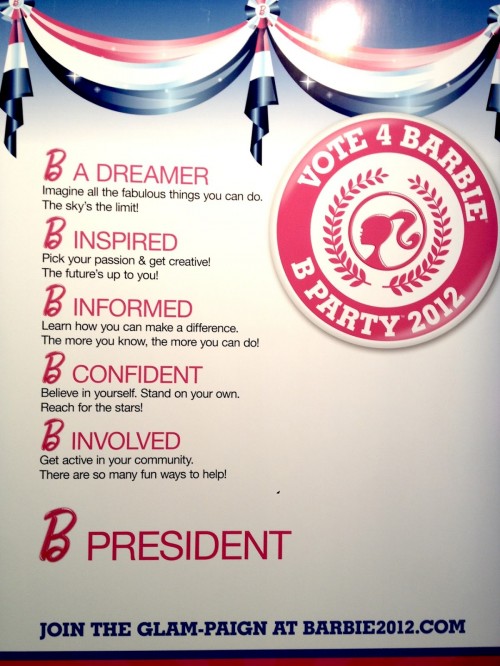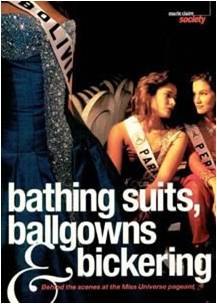Cross-posted at Work That Matters.
Barbie is running for President of The United States of America… again. She even has a campaign Tumblr. But what is her platform?
Okay, so she’s not taking any strong stands on the GOP’s War on Women’s reproductive rights. But she did come up with a totally awesome nickname for her campaign (“Glam-paign”).
Apparently, however, candidate Barbie will do something no other candidate can: she will bridge the racial divide in America by morphing herself into four different ethnicities!
Yes, I get that this is a toy. And the Miss-America-style platitudes are to be expected from a company that wants to sell to both sides of the political divide. But it’s a shame that girls don’t get a chance to see that women really can change the world.
This week, Malawi swore in Southern Africa’s first female head of state. She wasn’t elected as such, but as Vice President took the position after President Bingu wa Mutharika died in office. (A scenario that could have happened with Sarah Palin, had John McCain won the Presidency.)
Other women currently heading countries are:
- Ellen Johnson Sirleaf: President of Liberia
- Doris Leuthard, Eveline Widmer-Schlumpf, Simonetta Sommaruga: Members of the Swiss Federal Council, Switzerland
- Pratibha Patil: President of India
- Cristina Fernández de Kirchner: President of Argentina
- Dalia Grybauskaitė: President of Lithuania
- Laura Chinchilla: President of Costa Rica
- Dilma Rousseff: President of Brazil
- Atifete Jahjaga: President of Kosovo
- Monique Ohsan Bellepeau: Acting President of Mauritius
- Slavica Đukić Dejanović: Acting President of Serbia
- Angela Merkel – Chancellor of Germany
- Julia Gillard – PM of Australia
- Yingluck Shinawatra – PM of Thailand
- Helle Thorning-Schmidt – PM of Denmark
- Portia Simpson-Miller – PM of Jamaica
- Kamla Persad-Bissessar – PM of Trinidad and Tobago
- Jóhanna Sigurðardóttir – PM of Iceland (Appointed)
- Hasina Wazed – PM of Bangladesh
The United States has yet to elect a woman to the position. And while Canada has had two appointed female Vice-Regents, we have yet to elect a woman to the Prime Minister’s Office. (Kim Campbell was nominated for the position directly by her party.)
So perhaps it’s time for Barbie, who has been in every federal election since 1992, to campaign a little harder. Or for North American countries to catch up with the rest of the world and nominate and elect a woman of substance who isn’t seen as just “another Barbie.”
———————————
Tom Megginson is a Creative Director at Acart Communications, a Social Issues Marketing agency based in Ottawa, Canada. Tom writes regularly about creative advertising and marketing ethics for the international social advertising blog, Osocio, as well as on his own, Work That Matters.











